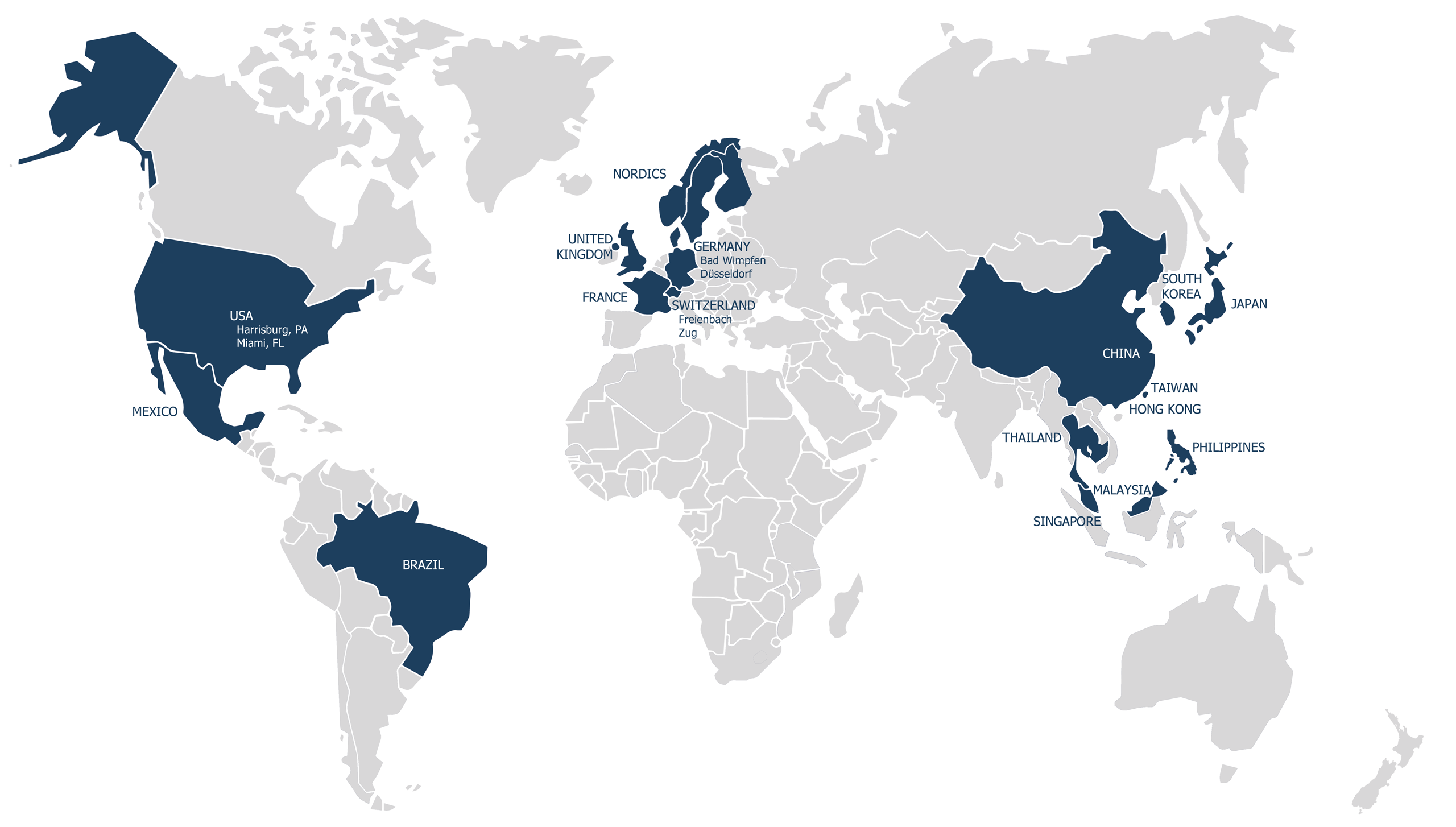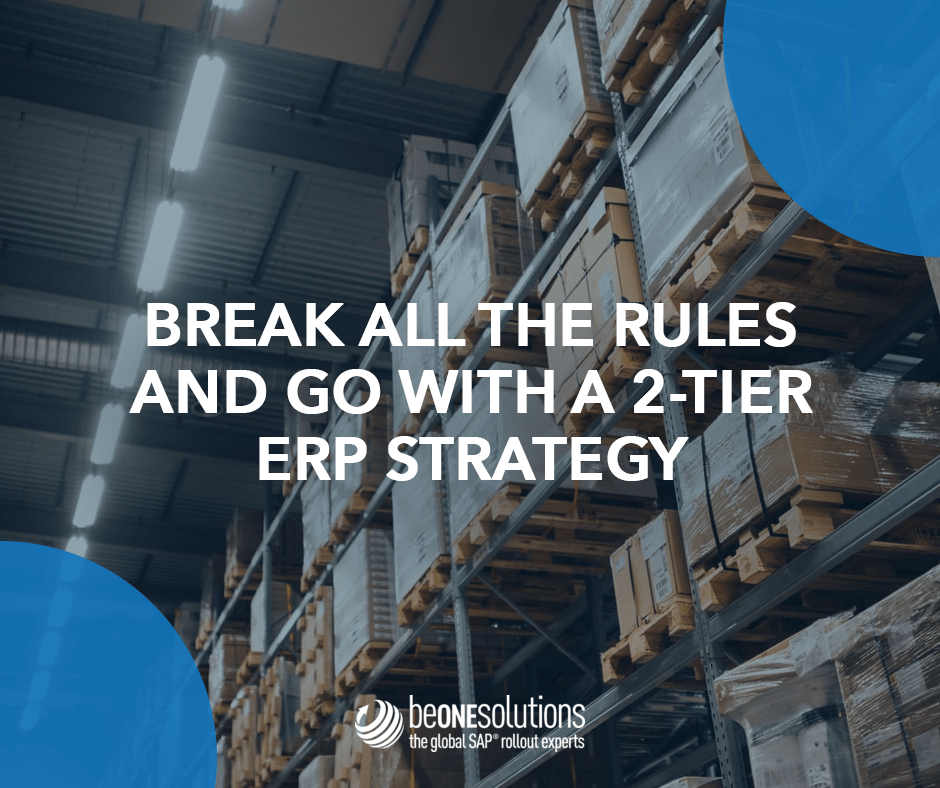Why Are Templates Key to Any International 2-Tier ERP Rollout?
Table of Contents
CloseIf you’ve been following our web series, by now, you must be well informed on 2-tier strategies, what it entails and its many benefits. In this blog, we’ll be going over the importance of a template to a global 2-tier strategy and how the right business partnership can help you get the best out of your ERP ecosystem.
Currently 50 years strong in the ERP industry, SAP is well versed in the sizes and complexities of companies and the solutions required to meet their needs. One size fits none and this reality is the motivation behind the development and support of SAP’s extensive stack of solutions.
As an example, while SAP S/4HANA On-premise is meant for large enterprises, SAP Business One and SAP S/4HANA Cloud, public edition are meant for mid-sized companies and subsidiaries of large, multi-national companies. In order to further enhance their 2-tier capabilities, these systems interact seamlessly via SAP’s own middleware solutions. These solutions are the bedrock of the 2-tier strategy.
SAP’s Vision and Road Map for 2-Tier Strategies
According to Mr. Justin Ho, Head of Strategic Initiatives and Transformation for Channel Sales Management ERP, SAP envisions two-tier ERP strategies as ideal when executed via a template-based approach. For companies with smaller subsidiaries running on the same solution, this gives three important benefits.
- First, with a template-based approach, rollouts are a lot easier and faster meaning several subsidiaries can be implemented one after the other.
- Secondly, given that the solutions are largely similar and on a simpler licensing model compared to the SAP S/4HANA Cloud and SAP ECC stacks, there is a lot of cost savings.
- Finally, complexity-wise, in certain areas where the subsidiaries are smaller, with a fewer complex operations, this allows for an easy-to-use solution that can also meet the requirements and sophistication of users in other areas with more complex operations.
The aim of the entire strategy is for smaller solutions to work hand in hand with bigger ones to achieve the right business outcomes. Asides our middleware which makes these integrations possible, a very key component of the 2-tier story I would say is also the partner you implement with. While we do have what it takes for this two-tier architecture to be developed from a solution standpoint, choosing the right partner is very important. This, of course, will depend on your industry and geographical coverage for example. This is where partners like be one solutions play an extremely important role in how we can roll out and support our end customers. This is the ecosystem we have in place, concluded Justin.
LORD’s Decision to Go to Template-Based and The Benefits
With a solid 2-tier ERP architecture involving their headquarters and bigger manufacturing sites running on SAP ECC and 20 legal entities worldwide running on SAP Business One, LORD is a perfect example of why this strategy might just be the boost your company needs to increase efficiency. According to Mr. Eddy Chan, Head of IT for the APAC region and responsible for 10 entities, having a single, easy to deploy and manageable piece of code that works for all countries is very important.
As earlier mentioned, in our other groups and divisions, SAP ECC is used and having an aligned master data management is very important. This means that all the master data; whether it's an inventory item, a vendor or a customer, are all created upstream in the ECC and flow down to our SAP B1s in the region. This applies to both the APAC and EMEA regions. We simply fill in the shells of all this master data information with more details specific to the countries. It’s very important for us for reporting and managing not just our inventory but also our global customer and vendor base.
Thanks to having a consistent template LORD not only benefits from a streamlined management of their different entities, but from a corporate perspective, there’s also a synergy of the work effected across regions.
“Having a global template that's more or less one-fit-for-all, of course taking into consideration the local rules and regulations, gives you a well-governed solution. It also gives you an easy adaptation and frankly speaking, a very cost-effective way of doing things. Instead of doing things 10 times, you do things once and then simply copy and paste it to other systems. And this is applicable not just in Asia but all over the world” added Mr. Olli Kylänpää, Regional Director for APAC, be one solutions.
What Did LORD Consider When Choosing an SAP Partner for Their Template-Based Implementation?
As Mr. Eddy Chan puts it: “Our SAP Partner’s global presence is very beneficial and important to us.” With 10 entities, among which seven countries operate in different languages, with different local business insights, having a partner with a regional presence like be one solutions is very handy to this corporation.
If we expand that picture beyond a regional to a global scale, they equally have an EMEA operation, in addition to the Asian one. The internal synergy between Eddy’s region and Europe is of great benefit in that some scripts created specifically for one region have greatly benefitted the other.
"Considering that be one solutions is not only regional in APAC but also global, covering the Americas and the EMEA, having a global partnership from the same experts with the same skillset, who know what we do and are able to cover all of us in the global space, is very important, not just for us but for similar companies.”
Working with a single global partner is both cost and time efficient. This is because it eliminates the laborious negotiation process with several local partners across the globe. It also cuts out long-winded knowledge transfer processes between different partners due to software obsolescence or longevity issues often associated with small, local businesses.
Having a single global point of contact, capable of providing SAP Support whereby one company coordinates all of your needs from blueprint creation to post-go-live support, is the key to avoiding unnecessary delays in project execution.
“We have traded in a lot of things for a single piece of code that can be used here in APAC and also in Germany as well in France for example. This is why we think having this two-tier architecture, for our size of operations right now has yielded the maximum benefits from what we invested in.” added Mr. Eddy Chan
Contact our SAP implementation experts today to learn more about the SAP support offered for your region. Our SAP expert services are just a click away!
You won’t want to miss be one solutions‘ next webinar. Add your email address to be notified :
Please select your language
Welcome on be one solutions‘ websites.
Please select your language.





